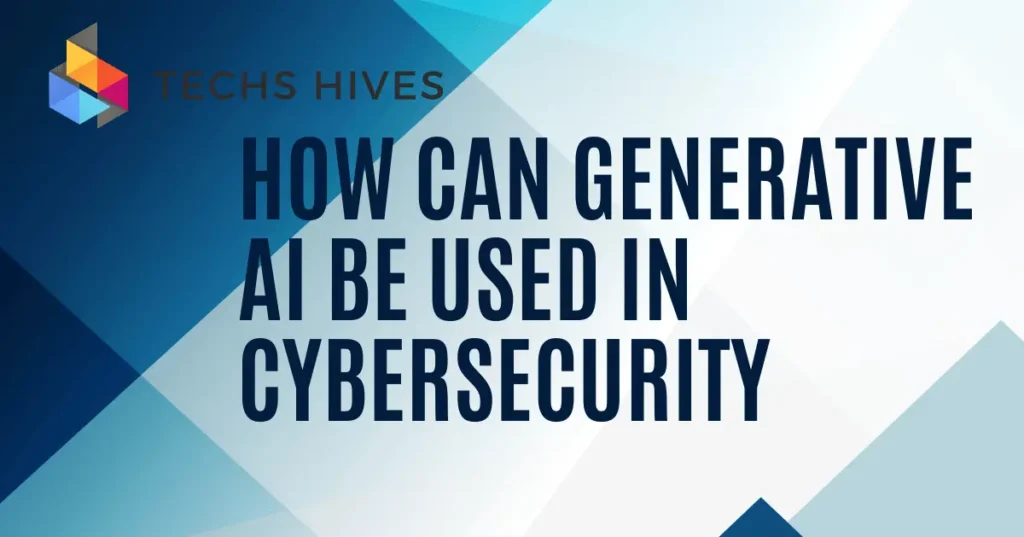Generative AI is a type of artificial intelligence that can create new content, like images, text, or even code, by learning from existing data. It works by analyzing patterns and then generating outputs that look similar to the original data. In cybersecurity, generative AI can help detect threats, predict attacks, and create automated responses to protect systems.
Cybersecurity is very important because it keeps personal data, financial information, and business systems safe from hackers. As cyber threats increase, companies need better tools to protect themselves. AI can help enhance security by quickly identifying unusual activities, reducing errors, and responding to threats faster than humans.
Table of Contents
Automated Threat Detection
Automated threat detection is a key tool in modern cybersecurity. It uses AI to scan networks and systems for any unusual activity. Instead of relying on manual checks, this technology can spot threats instantly, reducing the time between detection and response.
One of the main advantages of automated detection is its speed. It can process large amounts of data quickly and identify threats that might go unnoticed by humans. This allows for real-time protection, stopping attacks before they cause serious damage.
Another benefit is its ability to detect complex patterns. Some cyberattacks are subtle and difficult to identify. Automated systems can recognize these patterns and alert security teams to potential risks. This makes the overall security process more effective.
By using automated threat detection, organizations can better protect their systems. It not only improves security but also allows cybersecurity teams to focus on other important tasks, making their work more efficient.
Phishing Detection and Prevention
Phishing detection and prevention are essential in protecting against cyber threats. Phishing attacks trick people into giving sensitive information, like passwords or credit card details, by pretending to be a trustworthy source. AI-powered phishing detection tools can quickly identify these fake emails or websites by analyzing patterns and warning users before they fall into the trap.
AI improves phishing prevention by constantly learning from new threats. It can detect subtle changes in phishing tactics and block dangerous emails in real-time. This helps to reduce the risk of employees or users clicking on harmful links or giving away personal information.
AI can also generate safe, automated responses to suspicious emails, further protecting individuals and organizations. With these tools in place, phishing attacks become easier to manage and prevent. This not only protects sensitive data but also boosts overall cybersecurity efforts.
Enhancing Incident Response
Faster Response to Cyber Threats
AI dramatically improves the speed of responding to cyber threats. When a security breach occurs, AI can analyze vast amounts of data within seconds, identifying the source and nature of the attack. It provides immediate insights and recommends actions, helping organizations react quickly. This fast detection and response prevent the attack from spreading and causing more harm.
Automating the Response Process
AI-powered tools can automate several parts of the incident response process. Tasks like isolating compromised systems, blocking malicious traffic, or automatically removing malware can be handled without human intervention. This reduces downtime and allows security teams to focus on more strategic actions, while the automated systems handle the urgent response.
Reducing Human Error
In a cyber crisis, human errors are common due to stress or time pressure. AI reduces these risks by providing consistent and accurate responses. It follows predefined protocols, ensuring that the right steps are always taken, without the risk of overlooking key details or making mistakes in judgment.
Improved Recovery and Protection
AI not only improves the response process but also aids in faster recovery after an attack. It minimizes the impact of breaches by containing the threat and preventing further damage. By enhancing the overall incident response, AI helps organizations protect their data and systems more effectively, reducing long-term risks.
Security Vulnerability Testing
By using AI for security vulnerability testing, organizations can improve their overall protection. AI provides a deeper level of analysis and can predict future vulnerabilities based on current data.
Identifying System Weaknesses
AI helps identify weak points in security systems by constantly analyzing them for vulnerabilities. It scans networks, software, and applications to find gaps that hackers might exploit. This proactive approach allows organizations to fix weaknesses before they become real threats.
Simulating Cyber Attacks
AI can simulate various types of cyberattacks to test the strength of security systems. These simulated attacks, known as penetration tests, show how a system would respond under real-world conditions. By simulating different attack methods, AI helps ensure systems are prepared for a wide range of threats.
Enhancing Penetration Testing
Traditional penetration testing can be slow and limited in scope, but AI speeds up the process and provides more thorough testing. AI can run continuous tests and analyze large amounts of data quickly. This makes it easier to find even hidden vulnerabilities that may have been missed through manual testing.
AI-Powered Malware Analysis
Detecting New Malware Variants
AI is highly effective at identifying new types of malware. It constantly learns from past attacks and can detect patterns that point to new malware variants. This ability allows AI to spot new threats faster than traditional methods, which often rely on predefined malware signatures.
Classifying Malicious Code
AI can classify different types of malware by analyzing their behavior. It looks at how the malware interacts with the system, how it spreads, and what damage it causes. By quickly identifying the type of malware, AI helps security teams choose the most effective way to remove it and prevent further infections.
Reducing Manual Analysis Time
Manual malware analysis can be time-consuming and requires expert knowledge. AI automates much of this process, scanning and analyzing malware in minutes rather than hours. This reduces the time needed to identify threats and allows security teams to focus on critical decision-making.
Future of Generative AI in Cybersecurity
Emerging Trends
The future of generative AI in cybersecurity will likely focus on advanced threat detection and prevention. As cyber threats become more sophisticated, AI will evolve to analyze larger datasets and detect complex attack patterns. This will lead to more proactive security measures, allowing organizations to stay one step ahead of potential threats.
Potential Advancements
Generative AI could revolutionize incident response by automating not only detection but also the entire response process. Future systems may integrate AI with other technologies, like machine learning and blockchain, to create a more robust security framework. This integration will enhance decision-making capabilities and streamline responses to security incidents.
Long-Term Impact on Cybersecurity Strategies
As generative AI continues to develop, its role in cybersecurity strategies will expand. Organizations may rely on AI for real-time threat intelligence, allowing for dynamic security measures tailored to specific threats. This shift will lead to a more adaptive approach, where security protocols are continuously updated based on emerging threats and vulnerabilities.
Challenges and Considerations
While the future of generative AI in cybersecurity looks promising, there are challenges to address. Ethical concerns, data privacy, and the potential for AI to be used by attackers must be considered. Organizations will need to implement responsible AI practices to ensure that the benefits of generative AI are maximized while minimizing risks.
Conclusion
Generative AI offers significant benefits for cybersecurity. It enhances threat detection, automates responses, and identifies vulnerabilities more effectively than traditional methods. By analyzing vast amounts of data, AI can quickly spot unusual activities and prevent potential attacks. This technology also helps security teams by reducing manual work and improving overall efficiency.
As cyber threats continue to evolve, using generative AI will become even more crucial. Organizations must embrace this technology to strengthen their defenses and protect sensitive information. However, it is essential to remain aware of ethical considerations and potential risks.



